It’s our first blog post here at Noble Octopus. So where better a place to start than at the beginning. How do you write an engaging blog post, and capture the interest of your readers?
I’ve sat at my desk, tapping away at my keyboard before holding down backspace and starting again, for some time now. Writing blogs can be tough. Writing something that people actually want to read is even trickier.
In this blog, we’ll discuss a 6 step process to help with writing engaging blog content.
Step 1 – Challenge
This is your chance to engage the reader. They’ve got a problem, a struggle, or an interest. It’s up to you to set out that issue and hook the reader in. Give the reader a proposition they can relate to, a common goal they might share. In our introduction, we’re setting out the issue that our blog is going to resolve.
Step 2 – Summary
Now that you’ve hooked the reader in, it’s time to summarise the issue, and inform them, of how you’ll answer the challenge.
Step 3 – Solution
The solution will probably form the bulk of your blog post. This is where a bit of creative writing comes in. Remember to continue to engage your reader with interactive content – question the reader, invite them to reflect on their own experiences. Draw upon your own experiences and opinions.
Step 4 – Examples
Examples don’t necessarily form their own step. They can be included throughout your solution. Don’t be afraid to use examples of both success of failure. It’s important to provide a balanced argument. Diagrams, images or charts may help the reader’s understanding.
Step 5 – Lessons Learnt
A summary of the main points of the article will help to consolidate the reader’s understanding. What should the reader take away from the blog? How can they benefit from following what you’ve told them?
Step 6 – Invitation
We think the invitation has a dual purpose. If your blog has a comments section, why not invite your audience to comment with their thoughts? The beauty of blogging is that you can create a social space to encourage discussion. You maybe also use this section to explain, in further detail, how you can help people with the solution to their problem – invite the reader to learn more about you and your business.
Step 7 – Conclusion
Have you provided the solution to your initial challenge? Hopefully so. Use your closing paragraph to really spell out what the reader has learnt. What parting thought do you want to leave your reader with?
Following a simple framework such as the one we’ve set out here can simplify the process of blog writing. It may help to sit down before you begin writing a plan out these stages. The trick is to integrate these stages into a piece of text that flows seamlessly from one step to the other.
I’ve also found it helps to use a plugin for WordPress such as Yoast. Yoast has a readability checker, which monitors things such as reading ease, paragraph and sentence length. I find keeping an eye on this as I right helps me to continue to think about my writing style, and continue to keep the reader in mind as I write.
Hopefully our first foray into the world of blogging has been of some use to you. With a bit of luck I’ve done OK, and it’s not too obvious that I’ve followed the framework myself! I certainly found it’s made the writing process a little more straightforward, I hope it does for you too!
Norbert x



